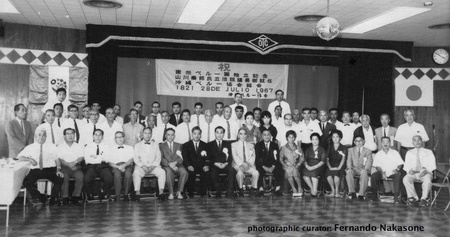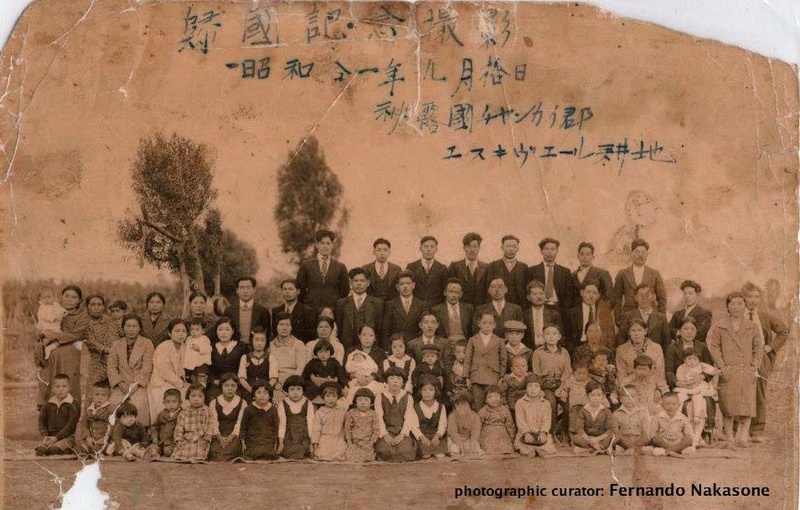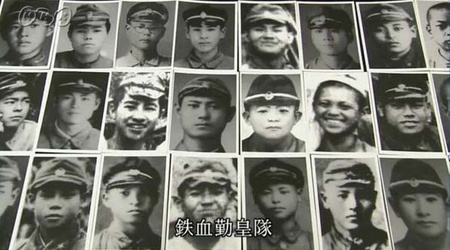I write this article in memory and recognition of all the Nisei who had to travel from a very young age, more than 80 years ago to Okinawa. Remember all the journey they had to go through, many times a sad life, far from their parents and siblings, but a generation that moved forward and never forgot Peru from their new home.
The decade of the 1930s was passing, more than 25 years had passed since the arrival of the first Okinawan immigrants to Peru and, although it is true that some returned and others died as a result of the poor conditions in which they lived, many managed to form their own families, get ahead and progress. In that decade, some already had their small farms, others had even migrated to the city and had a small business.
In general, they already had savings that allowed them not only to think about survival, but also about what the future of their children would be. The majority were still of school age, there were already small schools where Japanese education was taught, however, many They thought it was best to send them to Japan to receive the best education possible.
Added to this, there were also many cases at that time in which the mother, when giving birth at home in the hands of a midwife, died due to lack of adequate medical care and many children were left in the hands of the father, who had to work. and was not able to take care of them. That's when they thought about sending their children to Japan so that their relatives could take care of them. This happened at that time, but the case of the Okinawans was special because when the children arrived in Okinawa in the late thirties they found that the war had started and it was no longer possible to return to the country where they were born.
Some of the Nisei who now live in Okinawa tell me that when they arrived they felt the impact of a different culture, even though they knew some Japanese and being children of Japanese, they were definitely totally different situations.
One of them told me that on the first day of school he decided to go the same way as he did when he went to school in Peru, with his leather shoes and his leather suitcase with some pencils and supplies. When he arrived at school he was surprised that everyone was walking without shoes and that no one was using a suitcase, but rather they were using furoshiki (they wrapped their supplies in a cloth cloth). The boys made fun of him, luckily he found another Peruvian Nisei in the same situation and they accompanied each other.
Apparently these Nisei who arrived in Okinawa, and surely like in all of Japan, had a good school education compared to that of Okinawa, since by investigating the majority they continued their secondary studies (at that time it was not common to attend secondary school) and in The best secondary schools in Okinawa. By having to study in these good schools, which were few, many had to walk hours to get to their study center. Years later, that effort would bear fruit.
Unfortunately, the war began and many of these children, some already teenagers, enrolled in the teenage volunteer armies called “Iron and Blood” (鉄血勤皇隊). Its function was to carry communications between the campaign command and the battle front. Likewise, they carried the war supplies and ammunition that the soldiers at the front needed. All these boys were recruited from these flagship secondary schools, because being better organized they had also given them military training. In these schools there were many Nisei studying and now forming part of this squad. There were approximately 1,780, but more than 800 teenagers died in the line of duty. The worst part was borne by the Nisei who were already older and had to fight as soldiers on the front where the chances of survival were minimal.
The war ended and many of these children continued their lives. Many of them, after this traumatic experience, added to the extreme poverty that was experienced in Okinawa, wanted to return to their parents, but different situations arose depending on the country. In the case of Argentina, President Domingo Perón, upon learning that there were children of Japanese descent, but born in Argentina and who had been trapped by the war, the first thing he did was send a plane to Japan to pick them up and bring them back.
Something different happened in Peru, where the government, despite having ended the war, prohibited the re-entry of Japanese into the country for several years. The Nisei, despite being Peruvian by birth, were considered Japanese citizens and were not allowed to return. Some had to travel to other countries such as Argentina, Brazil and Bolivia trying to enter Peru by crossing the border by land. Another part of them never reached the border and ended up staying in these countries.
In Peru, it was only in the 1950s that the Peruvian Nisei by birth began to return, but with Japanese education, as adults, they returned to the country and became a generation that we called “Kirai Nisei” (帰来二世) “ Ki ” for return and “ Rai” for arrival, that is, nisei who left and returned. This generation would be the one that in the 1970s and 1980s would replace the Issei presidents (first generation Japanese) in leadership positions, as they were Nisei, but having received Japanese education, they better understood the thinking of the Issei leaders.
Although hundreds of these children, now young and adults, were able to return and reunite with their families, thousands of them could not do so, either because they died in the war or simply because they did not have the resources to do so. I remember the story of an aunt in Okinawa who told me about her cousin who was born in Peru, but who was taken to Okinawa as a child. She always dreamed of returning to Peru one day, since her parents and siblings were there, the sad thing is that she died young without fulfilling her dream of returning and reuniting with her family.
The Nisei who did not return and stayed in Okinawa continued their lives and, as I mentioned before, most of them were very dedicated students and graduated from the best secondary schools in Okinawa. This ensured that many began working as public officials or as company employees. In the future, thanks to their good training, they would become authorities and great businessmen.
This could explain why many Okinawan leaders in Peru managed to obtain many donations from Okinawa, since all these Nisei who were in strategic positions, both in the government and in companies, put their good offices and influences and helped us to be able to obtain important donations in favor of Okinawan institutions.
Many Nisei stayed in Okinawa, but they never forgot Peru. They formed the OKINAWA PERU KYOKAI Association (沖縄ペルー協会) and every July 28 (until now) they meet to celebrate the National Holidays, most of them have forgotten Spanish, but they have not lost their love for Peru and the memory of their parents and family that they left in the land where they were born.

© 2022 Fernando Nakasone




